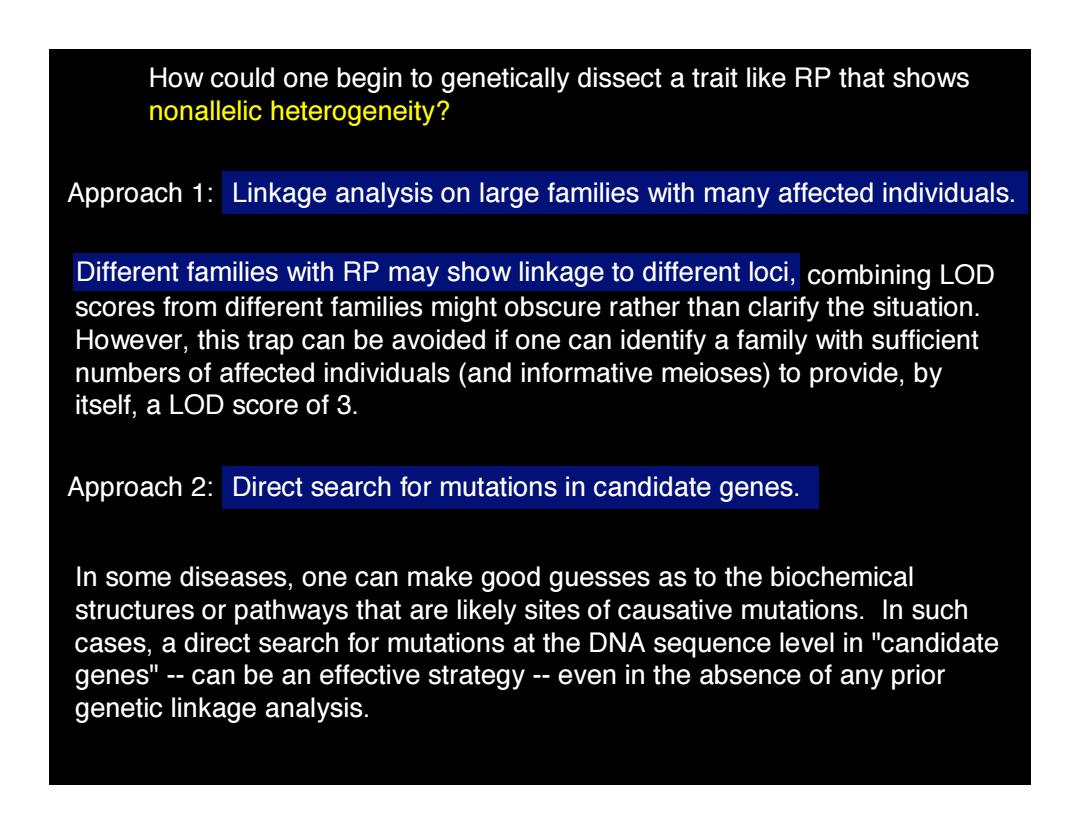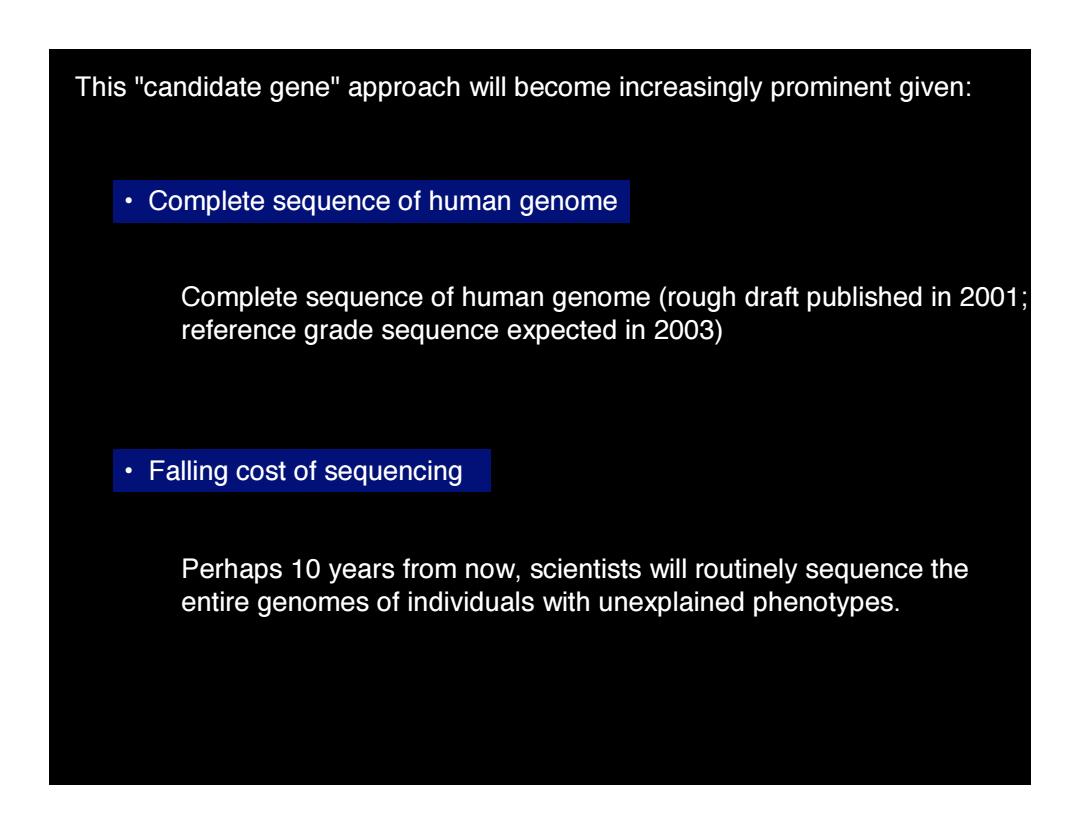
How could one begin to genetically dissect a trait like RP that shows nonallelic heterogeneity? Approach 1:Linkage analysis on large families with many affected individuals Different families with RP may show linkage to different loci,combining LOD scores from different families might obscure rather than clarify the situation. However,this trap can be avoided if one can identify a family with sufficient numbers of affected individuals (and informative meioses)to provide,by itself,a LOD score of 3. Approach 2:Direct search for mutations in candidate genes. In some diseases,one can make good guesses as to the biochemical structures or pathways that are likely sites of causative mutations.In such cases,a direct search for mutations at the DNA sequence level in "candidate genes"--can be an effective strategy -even in the absence of any prior genetic linkage analysis
How could one begin to genetically dissect a trait like RP that shows nonallelic heterogeneity? Approach 1: Linkage analysis on large families with many affected individuals. combining LOD scores from different families might obscure rather than clarify the situation. However, this trap can be avoided if one can identify a family with sufficient numbers of affected individuals (and informative meioses) to provide, by itself, a LOD score of 3. Approach 2: Direct search for mutations in candidate genes. In some diseases, one can make good guesses as to the biochemical structures or pathways that are likely sites of causative mutations. In such cases, a direct search for mutations at the DNA sequence level in "candidate genes" -- can be an effective strategy -- even in the absence of any prior genetic linkage analysis. Different families with RP may show linkage to different loci

This "candidate gene"approach will become increasingly prominent given: Complete sequence of human genome Complete sequence of human genome (rough draft published in 2001; reference grade sequence expected in 2003) Falling cost of sequencing Perhaps 10 years from now,scientists will routinely sequence the entire genomes of individuals with unexplained phenotypes
This "candidate gene" approach will become increasingly prominent given: • Complete sequence of human genome • Falling cost of sequencing Complete sequence of human genome (rough draft published in 2001; reference grade sequence expected in 2003) Perhaps 10 years from now, scientists will routinely sequence the entire genomes of individuals with unexplained phenotypes